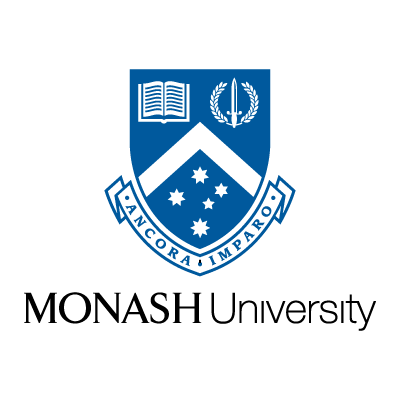Design and Media Communication
Monash University
About
The design and media communication sector is a flourishing global industry.
This double degree provides you with a creative, next-generation skill set that will open multiple opportunities for you to work in, contribute to, and shape the future of contemporary communication.This double degree allows you to develop specialist design skills in Communication, Industrial, Spatial or Collaborative Design, combined with Media Communication where you can choose between four specialisations in journalism, media, public relations or screen.This degree fosters a new generation of thinkers, future-driven design and media communication professionals who will dare to create positive change across all endeavours and shape the future of contemporary design and communication.
Structure
The Bachelor of Design is a specialist course that develops through theme studies in history and theory, drawing foundation, and design studios specific to communication design. These will come together in the form of a graduand exhibition normally developed during the final two studio units in the third year of the course.
Part A. History and theory studies
History and theory units will equip you with the skills necessary to research design issues and enable you to contextualise your own practice and communicate ideas and strategies. Through the prism of history, you will begin to situate the place of design in society by referencing pivotal art, design and architecture movements. Later units address issues of culture, society and specific design themes.
Part B. Drawing foundation
This will assist you to develop the practical and intellectual skills required for art, design and architecture students in the discipline of drawing.
Part C. Design studios
In the communication design studio units you will undertake a focused exploration of a range of media and elements including typography, image, layout, two and three-dimensional design, interactivity, sound and motion as core components to their communication design solutions. Studio-based projects across both print and digital media platforms will develop skills in narrative structure, typography, image construction and manipulation, interactive communication processes, production methods and technologies, and the planning and management of design outcomes.
Part D. Occupational health and safety study
This will introduce you to occupational health, safety and environmental training particularly within the context of studying art, design and architecture.
The Bachelor of Media Communication is a specialist course, developed through three themes that combine to underpin media communication practice: strategic knowledge, practical and professional skills, and collaboration and leadership. In the double degree course you complete:
Part A. Strategic knowledge
Builds students' competence in analysing and understanding the current state and past developments in media communication locally and globally; understanding impacts of media and communication transformation, and media power; creating future scenarios and media communication visions by developing students' preparedness and adaptability for future media communication change and creativity.
Part B. Practical and professional skills
This involves developing students' competencies in linking knowledge and media practice in professional contexts, such as conceptual and implementation skills, project and content management skills, hands-on experience in putting knowledge into practice, and thereby testing and creatively experimenting with (strategic) knowledge about media transitions and transformations. It also involves developing students' competency in ethical and legal aspects of media communication.
Part C. Collaboration and leadership
This involves competencies necessary for students to work in teams and in different knowledge communities and media communication professional settings. It includes competence in engaging with stakeholders, media literacy, and participatory research and media making in collaboration with experts from academia, industry, government, and the community. It also includes competency in social and cross-cultural awareness.
Entry requirements
Qualifications
Equivalent Australian Year 12
Recent secondary education
ATAR requirements
ATAR
87.25
Note Lowest Selection Rank to which an offer was made78
Note Monash guarantee for 2021 entry79.5
Note Lowest ATAR to which an offer was made ATAR Calculator Monash is committed to admissions transparency. View the ATAR and student profiles for this course.Subject prerequisites
All applicants must satisfy the following prerequisites or their equivalents.
Australian VCE subjects
English
Units 3 & 4: a study score of at least 30 in English (EAL) or 25 in English other than EAL
Maths
N/A
Sciences/Other
N/A
IB subjects
English
At least 4 in English SL or 3 in English HL or 5 in English B SL or 4 in English B HL
Maths
N/A
Sciences/Other
N/A
VET Study
Applicants will not be admitted to this course solely on the basis of a VET qualification.
This course uses the entire academic record as part of its selection considerations.
All applicants must satisfy the equivalence of the VCE subject prerequisites
Higher education
Entire academic recordThis course uses the entire academic record as part of its selection considerations.
All applicants must satisfy the equivalence of the VCE subject prerequisites
Work and life experience
Multiple pathways to this course
Applicants who have successfully completed Year 12 are eligible to apply for this course.
Applicants with no formal secondary or tertiary qualifications are not eligible to apply for this course. This course uses the entire academic record as part of its selection considerations.
There are many ways to gain entry to a course at Monash. If you don't meet our entry requirements, there are pathways to help. More about alternative pathways...
Additionally, we recognise that some applicants may have experienced difficulties that have disadvantaged them when applying for university. We offer a range of special admissions schemes that may help you gain entry to your chosen course, including pathways for Australian Aboriginal and/or Torres Strait Islander students. More about special admissions schemes...
All applicants must satisfy the equivalence of the VCE subject prerequisites
Alternative qualifications and prerequisites
For other domestic and international qualification entry requirements and scores for this course use the study credit and admissions eligibility search.
English requirements
Applicants must also meet the English language requirements.
University entrance requirements
Minimum entrance requirements for admission to Monash University Australia.
Learning outcomes
Learning outcomes
Students in the double degree course achieve the Course Learning Outcomes of the two partner courses.
Institution
